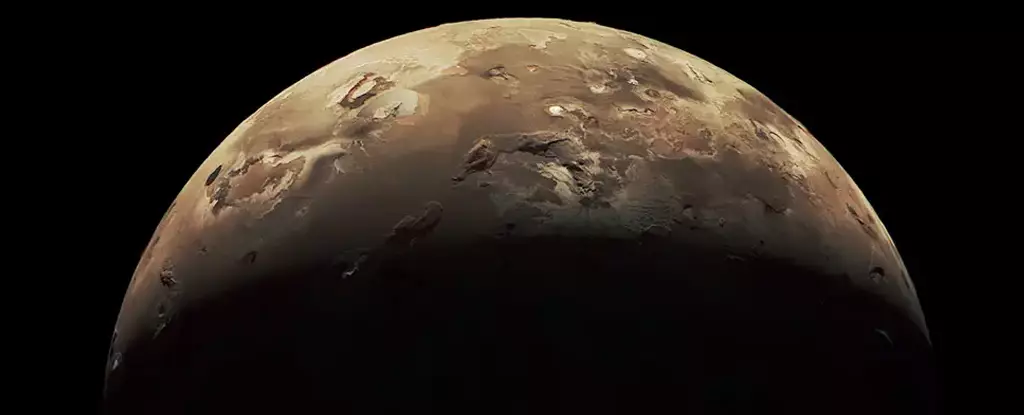NASA’s Juno spacecraft embarked on a mission to capture detailed images of Io, the most volcanically active world in our Solar System. On its close fly-by, Juno witnessed plumes of volcanic activity erupting in real-time from Io’s surface, providing new insight into the fiery mysteries that lie beneath. These encounters mark a significant milestone as they are humanity’s closest approach to Io in more than two decades, surveying it from a distance of 930 miles.
Io, affectionately known as a “tortured moon,” experiences a relentless push and pull from the gravitational forces surrounding it. Jupiter’s immense mass exerts a herculean tug towards the planet, while two neighboring moons, Europa and Ganymede, contribute to the gravitational dynamics. This intricate dance of competing forces generates friction across Io, heating up its core and fueling its volcanic activity.
With approximately 400 active volcanoes dotting its surface, Io boasts an impressive volcanic landscape. The Juno spacecraft’s close-up image captured on February 3 reveals the erupting gas shooting into space, a testament to the intensity of Io’s volcanic eruptions. Despite being only slightly larger than Earth’s moon, Io’s volcanoes surpass anything found on our own planet, with lava fountains reaching heights of dozens of miles. Loki Patera, Io’s largest volcano, dwarfs even Mauna Loa, Earth’s largest active volcano, measuring approximately twice its size.
Since 2016, the Juno spacecraft has diligently orbited Jupiter every 38 days. Now entering an extended mission phase, Juno will explore the entirety of the Jovian system, including Jupiter itself along with its rings and moons, until September 2025. Through these close fly-bys, the Juno mission’s scientific team aims to unravel the secrets behind Io’s explosive activity. Currently, two competing theories exist regarding Io’s intense volcanism. Some propose a global magma ocean churning beneath its surface, while others suggest a solid core of hot metal as the driving force. As scientists delve into the data collected during these fly-bys, the answer to this volcanic enigma may gradually reveal itself in the coming months.
The recent encounter between NASA’s Juno spacecraft and the volcanic moon Io offers a tantalizing glimpse into the dramatic geological activity prevalent in our Solar System. As Juno continues its mission to probe Jupiter’s heavenly realm, the images and data collected during these close encounters serve as invaluable tools for scientists aiming to deepen our understanding of Io’s unique volcanic landscape. With each passing day, humanity moves one step closer to unraveling the enigmatic forces at play within this captivating celestial body.



Leave a Reply